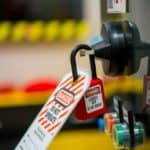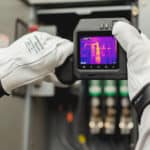Generally speaking, a “qualified person” has a very broad definition. Qualified means having the qualities, accomplishments, credentials, etc. that fit a person for a specific function or role. In the electrical construction industry, codes and standards define qualified person, with OSHA, NEC, and NFPA 70E having their own descriptions. The NFPA 70E definition differs slightly in that it requires demonstrating the appropriate knowledge and skillsets and requires such persons to receive safety training to identify and avoid electrical hazards. This post reviews the criteria that must be met to be considered a qualified person and also presents an example scenario for how to fulfill the demonstration portion of that set criteria.
What is a NFPA 70E Qualified Person?
A Qualified Person must:
- Have electrical skills and knowledge of the equipment they work on
- Be trained in electrical safe work practices methods of safe release and special precautionary techniques .2021 NFPA 70E Article 110.6(C)(1)
- Be able to demonstrate the ability to use a test instrument to verify the absence of voltage under 2021 NFPA 70E Article 110.8 (E)
To whom should these knowledge and skillsets be demonstrated? It is usually the employer. An employer is responsible for qualifying persons and assigning qualified persons to perform tasks and operations within their knowledge and skillsets.
Fulfilling the Qualified Person Demonstration Requirement (An Applied Example)
The following scenario is an example of how to fulfill the demonstration requirement:
Type of Electrical Equipment: 480-Volt Disconnect
Task: Perform a simple Lockout /Tagout Procedure and verify the absence of voltage with a test instrument in front of a designated Qualifying Person.
A “Qualified” a person must be able to:
- 1. Determine the nominal voltage, the shock protection boundary, and the appropriate PPE to wear using the equipment label (if available) or by using the NFPA 70E tables.
- Determine if an arc flash hazard exists. If an arc flash hazard exists, determine the arc flash boundary, and appropriate arc rated PPE to wear by using the arc flash label (if available) or by using the NFPA 70E tables.
- Use available documentation to determine all possible supply sources to equipment. Example: single line drawing
- Turn off disconnect and open door (PPE must be worn).
- Select the appropriate test instrument and check to see if instrument is working properly by performing a live –dead- live test.
- Measure supply side of disconnect “live”
- Measure downstream/load side connection “dead”
- Measure supply side of disconnect again “live”
Note: Remember to check phase-to-phase and phase-to-ground.
6. Close cover to disconnect and place a locking device and label/tag with all required information
Note: PPE must be worn when re-energizing disconnect.
What is a NFPA 70E Qualified Person?
Being an electrician is not enough. Employees operating electrical tools and devices must receive proper training that adheres to OSHA electrical workplace standards. Failing to comply with OSHA requirements puts workers at risk and can result in significant fines and exposure to multi-million lawsuits. With the stakes so high, it is imperative that employers assess their electrical infrastructure and work practices, and the provide quality training that protects their employees from harm and the company from falling out of compliance.
SEAM Group offers site-specific, expert electrical safety training, tailored to your facility. Available on-site or online, SEAM Group’s safety training courses cover electrical safety, electrical maintenance, and combustible dust safety and accommodates all levels of experience, from new employees to seasoned veterans. Employers and employees alike enjoy SEAM Group’s electrical training because it doesn’t get caught up by hard-to-grasp theories and concepts and instead focuses on realistic maintenance situations that are quickly applicable to everyday work situations.
Learn More About Electrical Safety Training.





